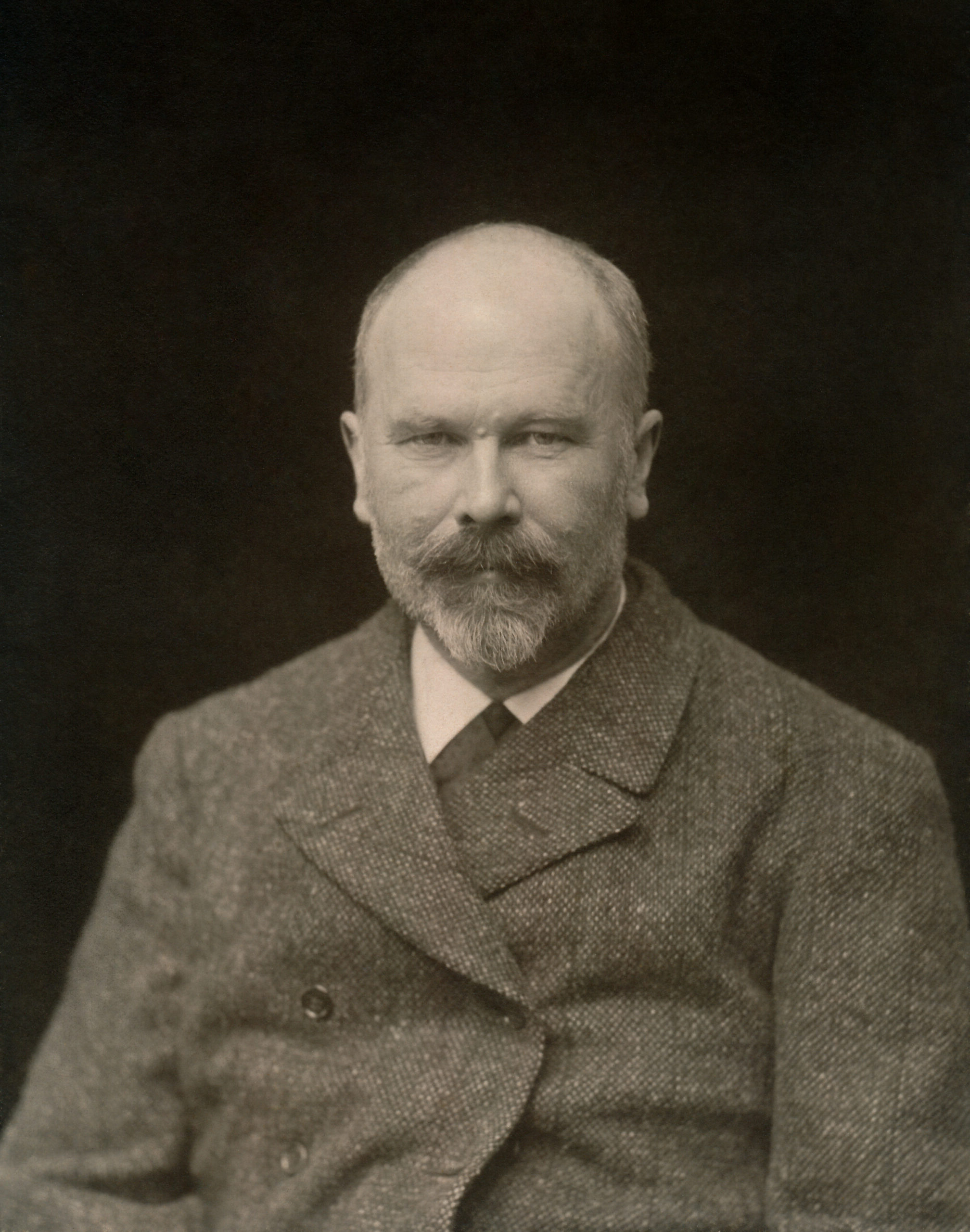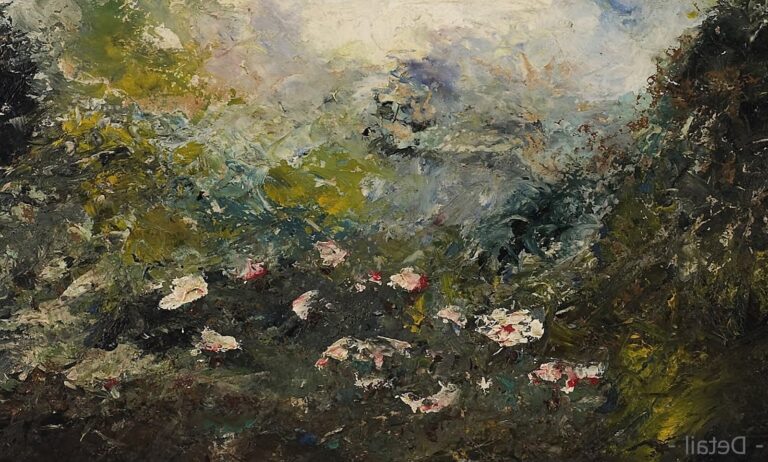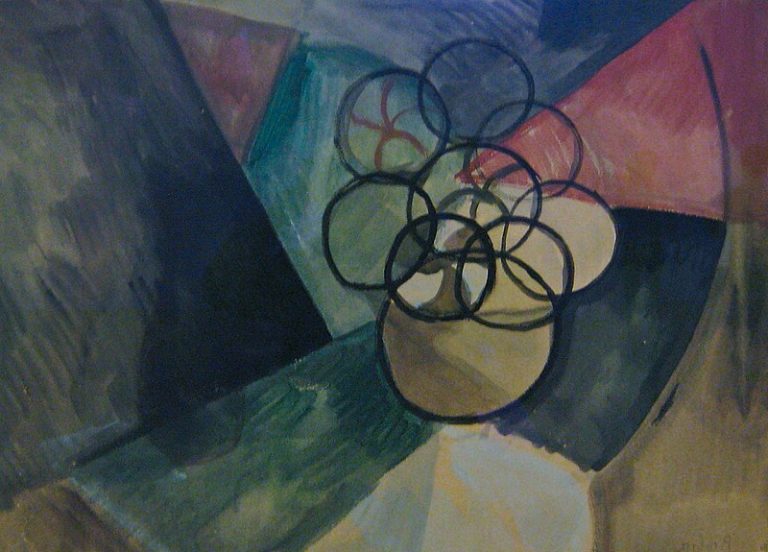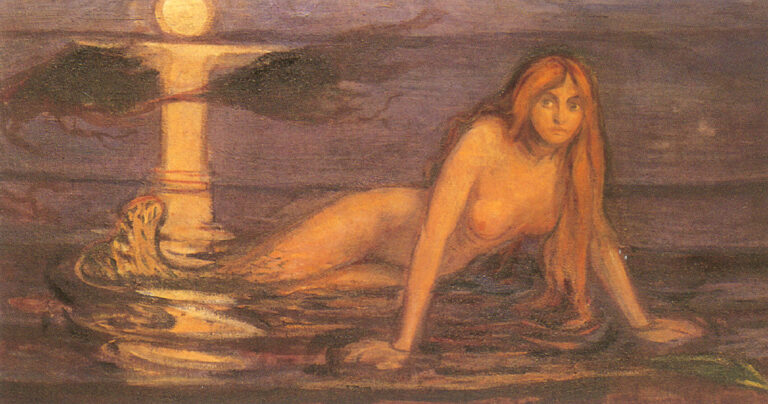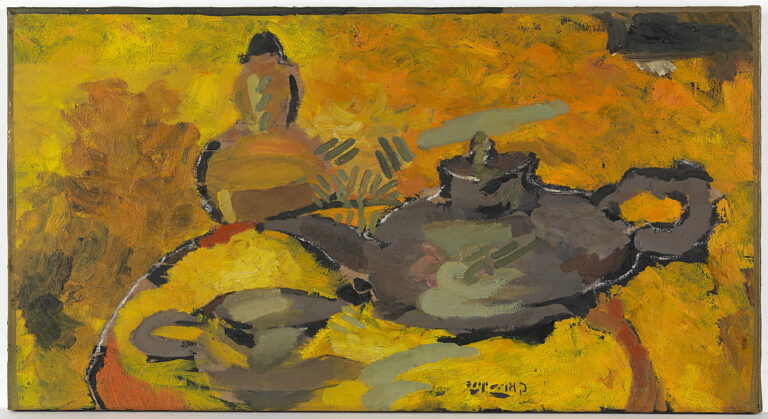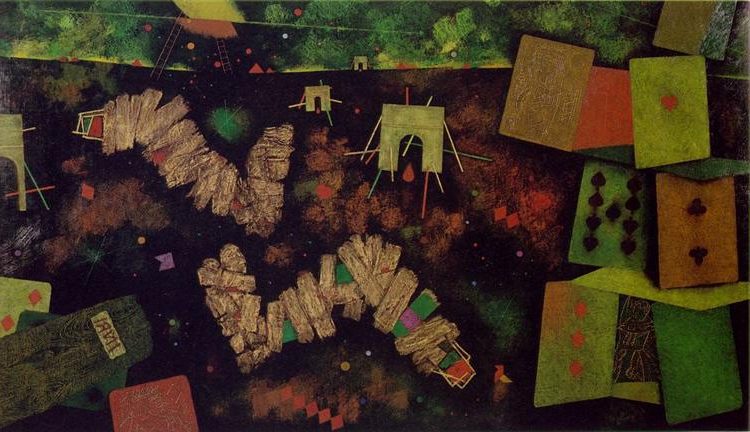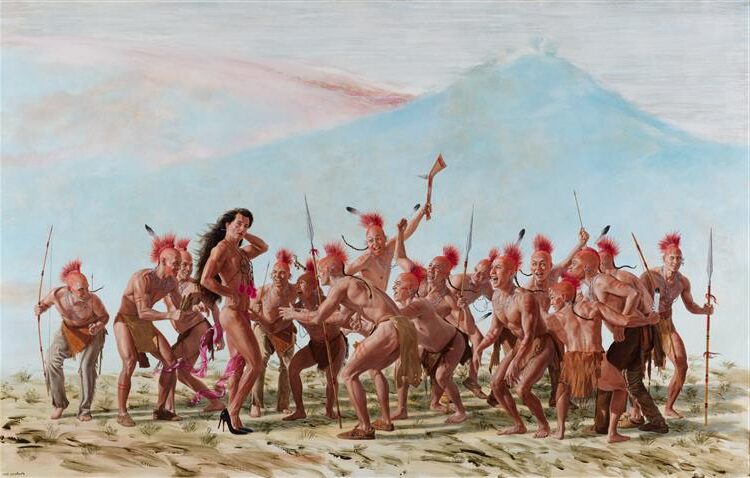Michael Ancher: Painter of Danish Coastal Life and Skagen Landscapes
Born: 9 June 1849, Bornholm, Denmark
Death: 19 September 1927, Skagen, Denmark
Art Movement: Realism
Nationality: Danish
Institution: C.V. Nielsen’s art school and Royal Danish Academy of Art
Michael Ancher: Painter of Danish Coastal Life and Skagen Landscapes
Michael Ancher’s Life and Career
Michael Peter Ancher (1849-1927) was a prominent Danish realist painter who became famous for his depictions of fishermen and the coastal life in Skagen. His artistic journey was shaped by formal education, his marriage to fellow artist Anna Ancher, and the creative environment of the Skagen artists’ colony.
Early Life and Education
Michael Ancher was born on June 9, 1849, in Denmark. His artistic path began at Christian Vilhelm Nielsen’s drawing school, where he developed his basic skills.
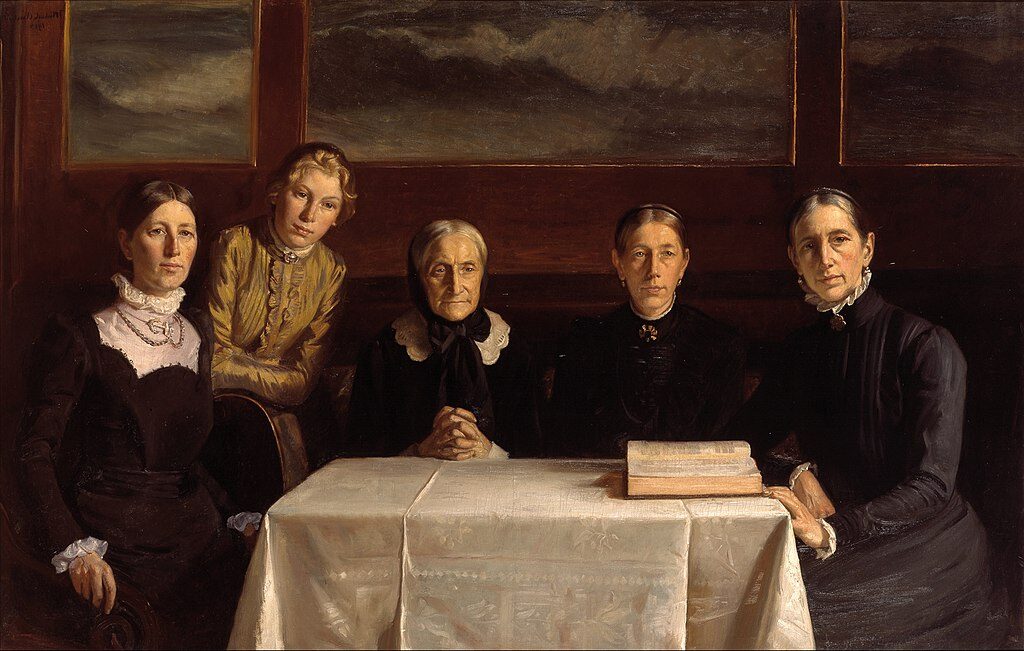
Christmas Day 1900, 1902, by Michael Ancher
In 1871, he achieved an important milestone when he was admitted to the prestigious Academy of Fine Arts in Copenhagen.
His early training laid the foundation for his realistic style that would later define his work. Ancher’s focus gradually turned toward depicting everyday life, particularly the struggles and dignity of working people.
He first visited the fishing village of Skagen in northern Jutland in 1874. This remote location at the northernmost tip of Denmark would become central to his artistic identity and career.
Marriage to Anna Ancher
In 1880, Michael married Anna Brøndum, who would become known as Anna Ancher, a talented painter in her own right. Anna was the daughter of the owner of Brøndums Hotel, a central gathering place for artists in Skagen.
Their marriage in 1882 created one of Denmark’s most significant artistic partnerships. While Michael focused on outdoor scenes and fishermen, Anna often painted domestic interiors and portraits with masterful use of light.
The couple established their home in Skagen, which is now preserved as Anchers Hus. Their residence became an important hub for the artistic community that flourished around them.
Influence of Skagen’s Artist Colony
The Skagen artists’ colony profoundly shaped Michael Ancher’s artistic development. This community of Danish, Norwegian, and Swedish painters gathered in the remote fishing village attracted by its unique light and authentic way of life.
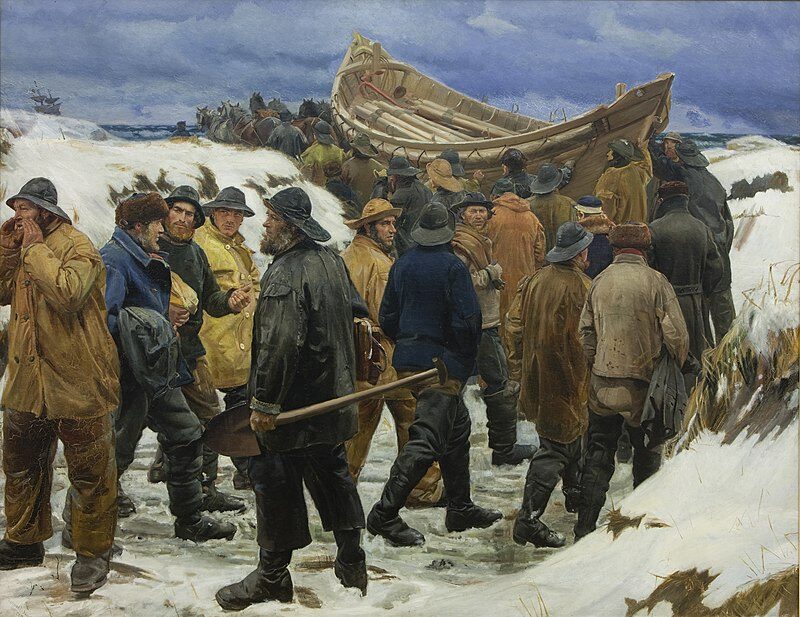
The Lifeboat is Taken Through the Dunes, 1883
Ancher became known for his powerful, monumental depictions of fishermen facing the harsh North Sea. His realistic style captured the dignity and struggles of these working men with remarkable authenticity.
At Brøndums Hotel, artists would gather to share meals, ideas, and critiques of each other’s work. This collaborative environment pushed Ancher to refine his techniques and themes.
His connection to Skagen lasted throughout his career until his death in 1927. Today, his works remain powerful testaments to the fishing community’s life and the distinct artistic vision that emerged from this special corner of Denmark.
Artistic Style and Major Works
Michael Ancher developed a distinctive artistic approach that combined realism with elements of impressionism. His works captured the harsh life of Danish fishermen with honesty and emotional depth, setting him apart from other Skagen painters of his time.
Development of Artistic Breakthrough
Ancher’s artistic journey began conventionally, but his move to Skagen in 1874 transformed his vision. The fishing community’s daily struggles became his primary subject matter.
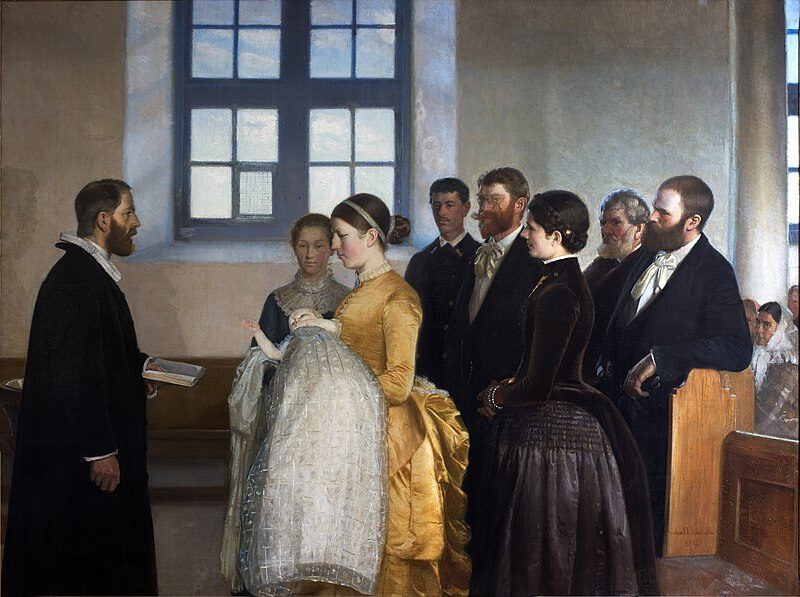
A Baptism, 1883, by Michael Ancher
Unlike many contemporaries who focused on landscape, Ancher centered his art on people and their stories.
His breakthrough came when he started portraying fishermen not as romanticized figures but as real people facing the dangers of the sea. This approach gained him recognition in the Danish art scene of the late 19th century.
Ancher’s technique evolved to emphasize strong composition and authentic emotional portrayal. He developed a particular skill for capturing human expressions during moments of tension or reflection.
Impressionism and Realism
Ancher’s style balanced impressionistic elements with strong realism. While other artists of his time fully embraced impressionism’s loose brushwork and light effects, Ancher maintained more structured forms and narrative focus.
His paintings feature impressionistic qualities in how he captured light, especially the unique northern light of Skagen. However, he never abandoned realistic details that gave his subjects dignity and presence.
This blend created works that feel both immediate and timeless. His color palette often emphasized blues, grays, and browns – colors that reflected both the sea environment and the somber nature of his subjects’ lives.
Ancher’s commitment to realism wasn’t just stylistic but ethical. He believed in honestly depicting the fishing community’s challenges rather than romanticizing their existence.
Significant Paintings
“Will He Round the Point?” (1883) stands as one of Ancher’s masterpieces. This powerful scene shows women watching anxiously from shore as fishing boats struggle to return during a storm. The painting captures both physical danger and emotional tension.
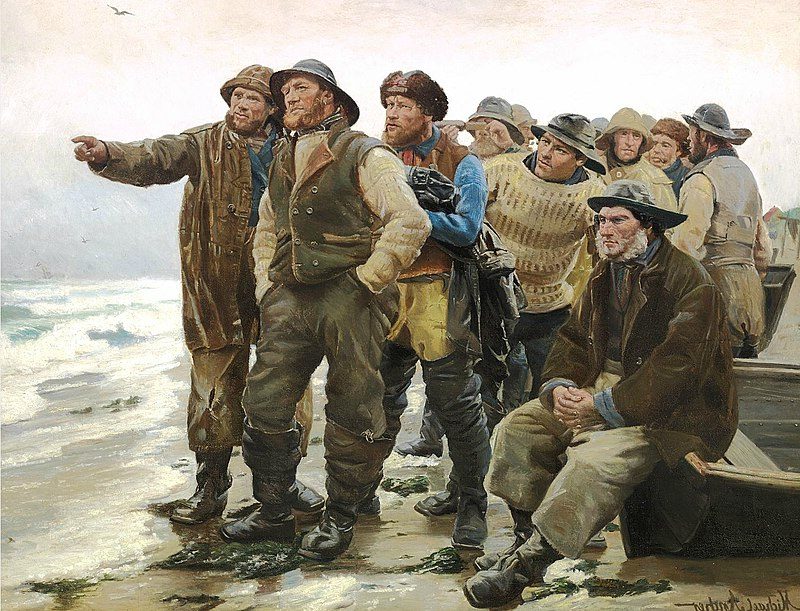
Will He Round the Point?, 1879, by Michael Ancher
“The Drowned Man” demonstrates Ancher’s unflinching approach to difficult subjects. The composition balances documentary realism with dignified portrayal of tragic circumstances.
“The Sick Girl” reveals Ancher’s sensitivity in depicting vulnerable moments. The painting shows his skill in using indoor light to create emotional atmosphere while maintaining realistic details.
His “Fishermen Launching a Boat” series showcases his mastery of group composition and action scenes. These works emphasize the collaborative nature of the fishing community and their constant battle with the sea.
Many of Ancher’s paintings are now available as art prints, making his powerful images accessible to a wider audience beyond museums.
Legacy and Influence in Modern Art
Michael Ancher’s realistic portrayals of Danish fishing communities continue to inspire artists and captivate audiences today. His work bridges traditional academic techniques with authentic depictions of working-class life, cementing his place in art history.
Exhibitions and Recognitions
Ancher’s paintings regularly feature in major exhibitions focusing on Nordic art and realism. The Danish government honored his contributions by placing his portrait on the 50-krone banknote from 1997 to 2010, alongside his wife Anna Ancher.
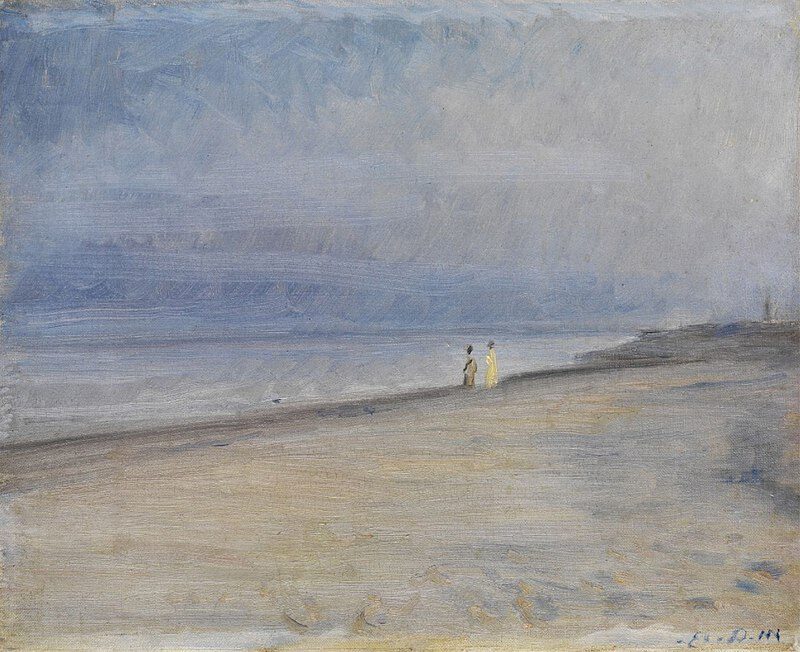
Beach Scene, 1912, by Michael Ancher
Several prestigious awards recognized his talent during his lifetime, including the Eckersberg Medal and the Thorvaldsen Medal. These accolades highlighted his significant role in developing the Danish artistic identity.
In 2012, a special exhibition titled “Michael Ancher and the Fishermen of Skagen” toured internationally, introducing his work to new generations of art enthusiasts and scholars.
Collections and Museums
The Skagens Museum houses the largest collection of Ancher’s works, displaying over 250 of his paintings in the very location where he created them. His daughter, Helga Ancher, played a crucial role in preserving her parents’ artistic legacy by donating their home as part of the museum.
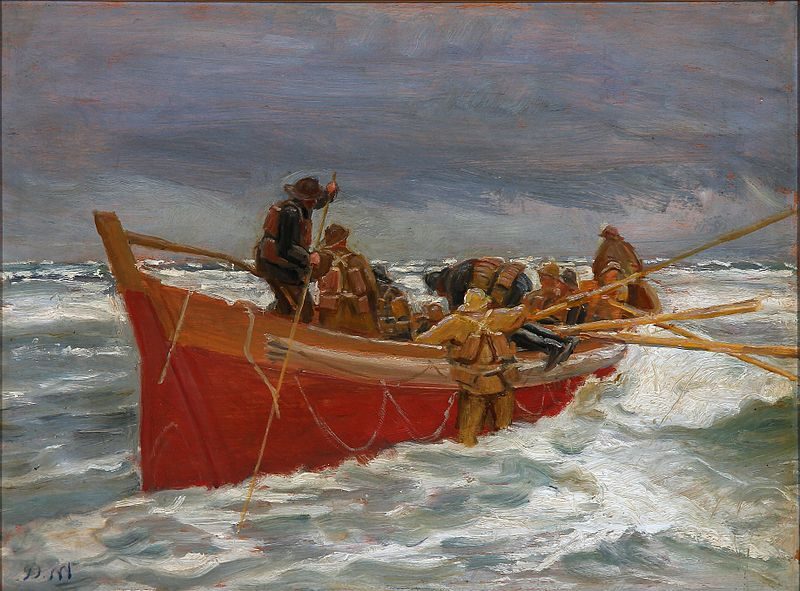
The Red Lifeboat on Its Way Out to the Sea, 1920, by Michael Ancher
The Statens Museum for Kunst in Copenhagen and the Hirschsprung Collection feature significant holdings of his major works. These institutions regularly loan his paintings for international exhibitions.
Museum-quality reproductions of Ancher’s most famous works, like “The Drowned Fisherman” and “Fishermen Launching a Boat,” are available worldwide, extending his influence beyond museum walls.
Frequently Asked Questions
Michael Ancher’s life and work spark many questions from art enthusiasts and historians. His contributions to Danish art, particularly through his realistic depictions of fishermen’s lives, continue to fascinate viewers and scholars alike.
What are the most notable works of Michael Ancher and their significance in Danish art history?
“The Drowned Fisherman” (1896) stands as one of Ancher’s most powerful works, capturing the emotional aftermath of tragedy in fishing communities. The painting exemplifies his ability to convey human emotion through realistic portraiture.
“Fishermen Launching a Boat” (1881) demonstrates Ancher’s skill in depicting the physical labor and teamwork of fishing communities. The composition shows his masterful handling of light and human figures in motion.
“The Lifeboat is Carried Through the Dunes” (1883) represents Danish resilience and communal effort in the face of danger. This monumental work solidified Ancher’s reputation as a chronicler of coastal life and established him as a central figure in Danish Realism.
How did Michael Ancher contribute to the Skagen Painters movement?
Ancher was a founding member of the Skagen Painters, a colony of artists who gathered in the northernmost town of Denmark starting in the 1870s. He arrived in Skagen in 1874 and quickly became drawn to the unique light and landscape.
His focus on portraying the local fishing community with dignity and realism became a hallmark of the movement. Ancher’s commitment to authentic representation helped establish the Skagen group’s identity.
Through his marriage to fellow artist Anna Ancher, he strengthened the community of artists in Skagen. Their home became a gathering place for artists, intellectually nurturing the movement’s development and cohesion.
Can you highlight the evolution of Ancher’s artistic style throughout his career?
Early in his career, Ancher’s work showed academic influence from his training at the Royal Danish Academy of Fine Arts. His early paintings featured more controlled compositions and traditional techniques.
By the 1880s, his style evolved toward greater naturalism and more dynamic compositions. His brushwork became looser and more expressive while maintaining his commitment to realistic representation.
In his later works, Ancher incorporated elements of impressionism, particularly in his handling of light. However, he never fully abandoned his realist approach, instead creating a distinctive style that balanced detailed observation with emotional resonance.
What influence did Michael Ancher’s personal life have on his artwork?
Ancher’s marriage to painter Anna Brøndum in 1880 significantly influenced his artistic development. Their creative partnership and mutual support allowed both artists to flourish in their work.
His integration into the Skagen community gave him intimate access to the lives of the fishermen he painted. Living among his subjects allowed Ancher to capture authentic moments and develop relationships that enriched his portraiture.
The birth of his daughter Helga in 1883 introduced new subjects into his work. Family life became an occasional theme in his paintings, providing a complement to his more common scenes of maritime labor.
What were the predominant themes and subjects in Michael Ancher’s paintings?
The fishing community of Skagen dominated Ancher’s work throughout his career. He painted fishermen at work, at rest, and in moments of crisis, capturing the full spectrum of their experiences.
Ancher frequently explored themes of human endurance and dignity in the face of harsh natural elements. His paintings often show people working together against the powerful forces of the sea.
Portraiture was another significant focus in his work. Ancher created compelling character studies of local residents, revealing both their physical features and inner qualities with remarkable sensitivity.
How is Michael Ancher’s legacy preserved and celebrated in modern times?
The Anchers’ home in Skagen has been preserved as the Michael and Anna Ancher’s House museum. Visitors can see the original furnishings, art collections, and studios where the couple worked.
The Skagens Museum houses the largest collection of Michael Ancher’s paintings. The museum, established in 1908, continues to celebrate and promote his contributions to Danish art.
Ancher’s works appear in major exhibitions of Danish and Scandinavian art worldwide. His paintings continue to influence contemporary artists interested in realism and themes of community and labor.


